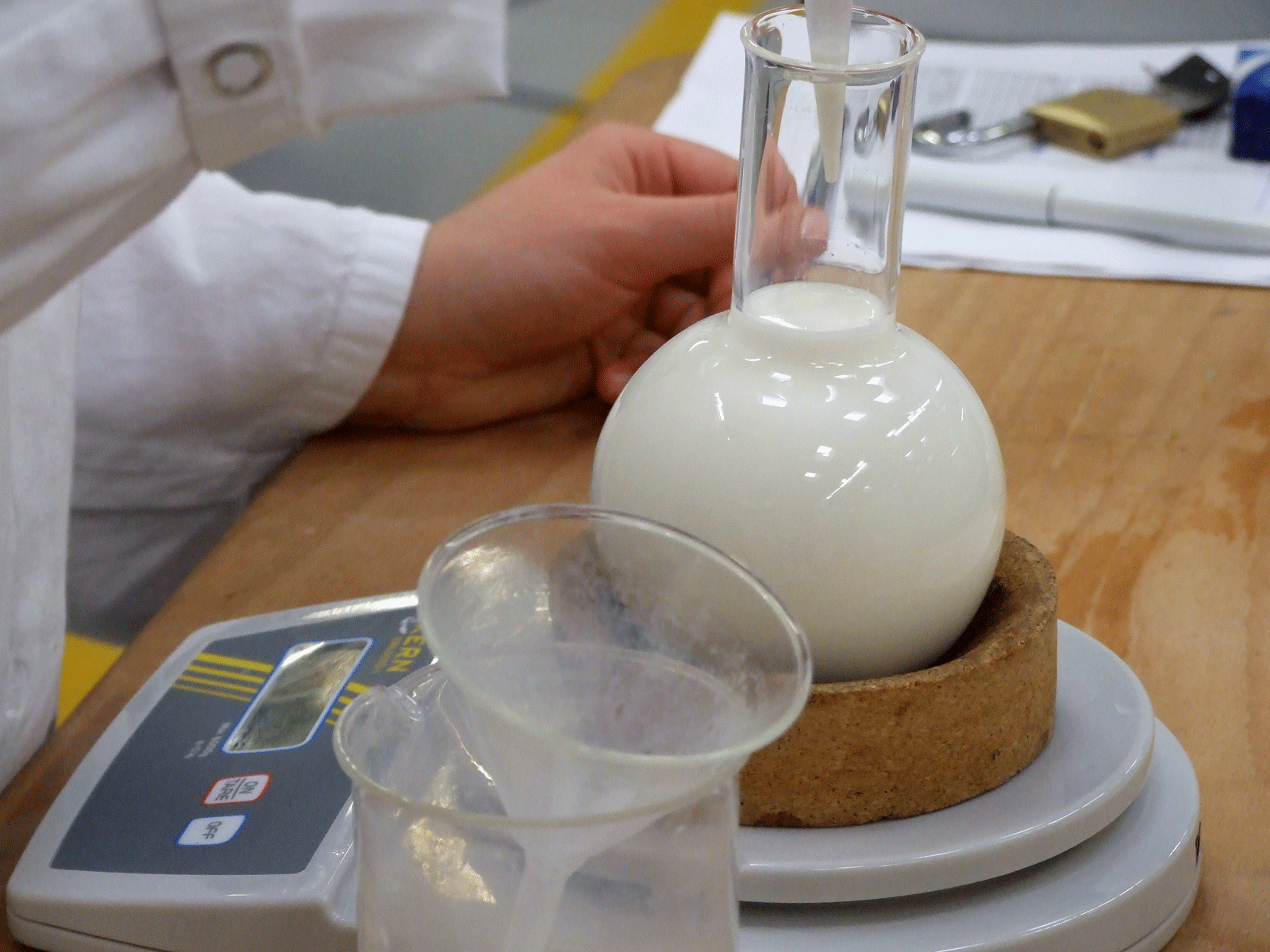These mass-market kitchen devices were a by-product of a much more narrow application - radar. During World War II, the magnetron, a tube that produces microwaves, was invented to spot German bombers on their way to the British Isles. Later, Percy LeBaron Spencer of the Raytheon Company discovered that these radar waves melted a candy bar in his pocket and so the microwave oven - originally known as the Radar Range - was born.
Microwave ovens can do wonderful things but the quality of the cooking is not uniform. So you might be a little skeptical about milk.
In the EU project MicroMilk, coordinated by the Fraunhofer Institute for Interfacial Engineering and Biotechnology IGB, researchers have developed a system that enables the preservation of milk and milk products with microwaves. A prototype for continuous microwave-pasteurization with a throughput of 400 liters of milk per hour has been integrated into an existing pasteurization process at a dairy station at the University of Hohenheim. It's shown a lot of advantages.

Mmmm, laboratory milk. © Fraunhofer IG
Currently, preventing spoilage and disease are done by heat pasteurization. Cold milk is preheated and then further heated in a separate section for a few seconds up to 72° C. The major microorganisms present in the milk are destroyed during this process, leaving milk safer and consumable for up to 10 days. Milk is pasteurized using plate heat exchangers in which preheated milk is passed in countercurrent to hot water or steam. The heat recovered from the subsequent cooling of the pasteurized milk is used to heat the incoming cold milk. Direct heating using plate heat exchangers has disadvantages: heat transfer can be weakened by a process known as fouling, in which the heating time is extended by formation of an undesirable layer on the large surfaces of the heat exchanger so they have to be cleaned regularly, which means energy, water and detergents.
Using microwaves means a reduction in fouling and that means extended operating times between system cleanings and water reductions. Milk heating with a pasteurization step from 68°C to 72°C not only results in a more homogeneous temperature gradient, but is also three times faster than with a plate heat exchanger.
Due to this rapid "flash heating", the milk is exposed to high temperatures only for very short time. "Much of the valuable and heat-sensitive substances, especially milk proteins and vitamin B remains undenaturated," explains Dr. Ana Lucia Vásquez, who coordinates the project at the IGB. “A very promising characteristic of microwave pasteurization is that we can also handle viscous products with a high content of solids, such as whey concentrates. Existing pasteurization plants are susceptible to fouling and have to be cleaned frequently.”
The core of the microwave method and a result of extensive simulation is a compact reactor, which is divided into different compartments. Each compartment is equipped with its own magnetron generating electromagnetic waves. The microwaves are coupled into a waveguide, which simultaneously acts as the heating chamber. Through this chamber, the milk flows in a special pipe. The pipe material does not absorb the microwaves, but is resistant against heat and pressure.
"During this passage, the milk is heated directly, and, unlike the plate heat exchanger, it is not heated from the outside to the inside, but volumetrically: when the electromagnetic waves are absorbed by the polar molecules of the milk, this makes the molecules oscillate over the entire volume and thus homogenously generating heat," said Vásquez.
Next up is proof of concept with two industrial scale units, though dairies with a relatively small throughput can integrate the new microwave module into their existing plate heat exchanger system. The flexible microwave-pasteurization system enables discontinuous operation, allowing the processing of small throughputs to remain profitable. For this purpose, a microwave unit with a flow rate of 2,000 liters per hour is designed. The unit is specifically designed for the flash-heating of milk from ca. 67°C to 72°C, replacing the conventional heat exchanger and the associated heating circuit for pasteurization. However, the regeneration stage for heat recovery remains unaltered.
"This makes the pasteurization system profitable for small dairies, since the system does not require a separate heating circuit or boiler for the start-up,” explains Vásquez.
The second microwave-pasteurization unit to be built has a flow rate of 1,000 liters per hour and will be tested to treat especially high viscous products such as condensed milk and whey concentrates, as well as products with a high content of solids such as fruit yogurt, fruit juice and fruit puree. This system is expected to operate without fouling formation and to heat dairy products to a wide temperature range of 60°C; fouling-prone plate heat exchangers will not be used.
The MicroMilk project partners are C. Van’t Riet Dairy Technology (Netherland), Dantech UK Ltd. (Great Britain), Malthe Winje Automasjon AS (Norway) and Schwarzwaldmilch GmbH Freiburg (Germany) with research partners the Fraunhofer IGB and University of Hohenheim.






Comments